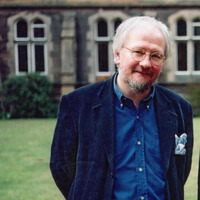
Justo Aznar
Related Authors
Magdalena Kozhevnikova
Institute of Archaeology and Ethnology Polish Academy of Sciences
Giulia Cavaliere
Lancaster University
Dr Silvia Camporesi
King's College London
Callie Joubert
South African Theological Seminary
Françoise Baylis
Dalhousie University
Rob Irvine
The University of Sydney
Chris Degeling
The University of Sydney
John R Berkman
University of Toronto
Andrew Linzey
University Of Winchester
Lisa Kemmerer
Montana State University Billings
InterestsView All (19)








Uploads
Papers by Justo Aznar
They begin their report by stating that they have consulted with institutions and experts in bioethics at the international level (they omit the names), who apparently have approved their work.
We suggest to our readers see the full special report by our Observatory, which doesn't approve of such experimentation justified from utilitarian pseudo ethics. We say in our report that "[...] due to the ethical difficulties that are linked to the production of human-animal chimeras, which we have dealt with previously, and which can be summarized by saying that it is difficult to determine what degree of humanization the chimeric embryo produced reaches. As a function of this, it may not be ethical to generate and manipulate these embryos, much less destroy them."
Four immediate steps were identified:
1. Strongly discourage any attempts to genetically modify the human germ line for use in clinical practice until all social, environmental and ethical issues have been discussed among scientific and governmental organizations;
2. Create forums in which scientists and bioethicists can provide information in this field;
3. Encourage and support transparent research to evaluate the efficacy and specificity of these technologies;
4. Convene a globally representative group of experts in genetics, lawyers, ethicists, members of the scientific community, the public, and relevant government agencies and interest groups to further consider the issues surrounding the use of these new techniques, and to propose recommendations for their regulation.
Some 40 million abortions are performed around the world every
year. In Spain, this fi gure reached 112,390 in 2011. Of these, approximately
5% were medical abortions. Th is percentage varies widely in
other countries: 67% in Portugal; 49% in France; 40% in England; and
70% in Scotland and Finland.
In the 1980s, more than 20 clinical trials had proven the effi cacy
of mifepristone coupled with misoprostol in inducing an abortion in
the fi rst few weeks of pregnancy. Medical abortions however, cause
negative side-eff ects, including teratogeni
Archbishop of Freiburg, saying that medical advances permit pills to be used that do not cause
abortion but that only prevent fertilisation to prevent unwanted pregnancy after having
unprotected intercourse, which is what the “morning-after pill” (levonorgestrel) and the “five
days after pill” (ulipristal acetate) are used for, do not open the possibility of their use, since
according to the scientific evidence to date, there are no drugs that always act by a
contraceptive mechanism. That is to say, there will always be some occasion on which their
effect is obtained by an anti-implantation, i.e. abortive mechanism, which would morally
invalidate its use.
They begin their report by stating that they have consulted with institutions and experts in bioethics at the international level (they omit the names), who apparently have approved their work.
We suggest to our readers see the full special report by our Observatory, which doesn't approve of such experimentation justified from utilitarian pseudo ethics. We say in our report that "[...] due to the ethical difficulties that are linked to the production of human-animal chimeras, which we have dealt with previously, and which can be summarized by saying that it is difficult to determine what degree of humanization the chimeric embryo produced reaches. As a function of this, it may not be ethical to generate and manipulate these embryos, much less destroy them."
Four immediate steps were identified:
1. Strongly discourage any attempts to genetically modify the human germ line for use in clinical practice until all social, environmental and ethical issues have been discussed among scientific and governmental organizations;
2. Create forums in which scientists and bioethicists can provide information in this field;
3. Encourage and support transparent research to evaluate the efficacy and specificity of these technologies;
4. Convene a globally representative group of experts in genetics, lawyers, ethicists, members of the scientific community, the public, and relevant government agencies and interest groups to further consider the issues surrounding the use of these new techniques, and to propose recommendations for their regulation.
Some 40 million abortions are performed around the world every
year. In Spain, this fi gure reached 112,390 in 2011. Of these, approximately
5% were medical abortions. Th is percentage varies widely in
other countries: 67% in Portugal; 49% in France; 40% in England; and
70% in Scotland and Finland.
In the 1980s, more than 20 clinical trials had proven the effi cacy
of mifepristone coupled with misoprostol in inducing an abortion in
the fi rst few weeks of pregnancy. Medical abortions however, cause
negative side-eff ects, including teratogeni
Archbishop of Freiburg, saying that medical advances permit pills to be used that do not cause
abortion but that only prevent fertilisation to prevent unwanted pregnancy after having
unprotected intercourse, which is what the “morning-after pill” (levonorgestrel) and the “five
days after pill” (ulipristal acetate) are used for, do not open the possibility of their use, since
according to the scientific evidence to date, there are no drugs that always act by a
contraceptive mechanism. That is to say, there will always be some occasion on which their
effect is obtained by an anti-implantation, i.e. abortive mechanism, which would morally
invalidate its use.